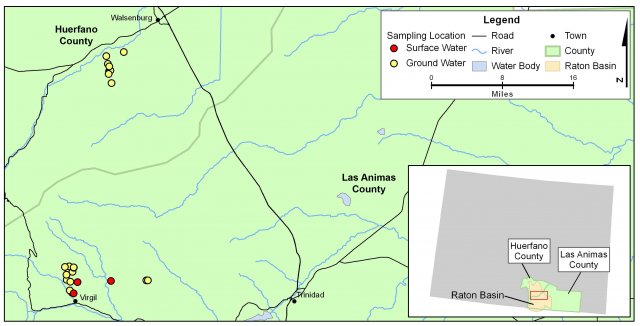Retrospective Case Study in the Raton Basin, Colorado
Case Study Background
EPA conducted a retrospective case study in the Raton Basin of Colorado to investigate reported instances of contaminated drinking water resources in areas where hydraulic fracturing activities occurred. This case study provided valuable insight into vulnerabilities and potential pathways for impacts to drinking water resources from hydraulic fracturing activities such as well construction and integrity, and gas migration.
- Report: Retrospective Case Study in the Raton Basin, Colorado
- Fact Sheet: Raton Basin, Colorado Retrospective Case Study
Key Findings
-
Background data indicates that dissolved methane is naturally present through-out the Raton Basin and EPA detected it in all samples collected from the domestic wells.
- In one of the sampling areas (Little Creek Field; Huerfano County), gas migration had occurred due to gas development but cannot be definitively linked to hydraulic fracturing.
- Tertiary-Butyl Alcohol (TBA) was also detected in samples from domestic, monitoring, and production wells; however, we were not able to confirm the specific source(s) of the TBA.
State Activities at the Case Study Location
Colorado Oil and Gas Conservation Commission conducted a study evaluating TBA in the Raton Basin. The report concluded that TBA has been found in the Raton Basin, but the definitive sources cannot be determined.
Sampling Activities
EPA completed four rounds of water sampling from October 2011 to May 2013. Samples were collected from domestic wells, monitoring wells, production wells, and surface water bodies in Las Animas and Huerfano counties where homeowners expressed concerns regarding potential adverse impacts on well water associated with hydraulic fracturing and/or coalbed methane development.

